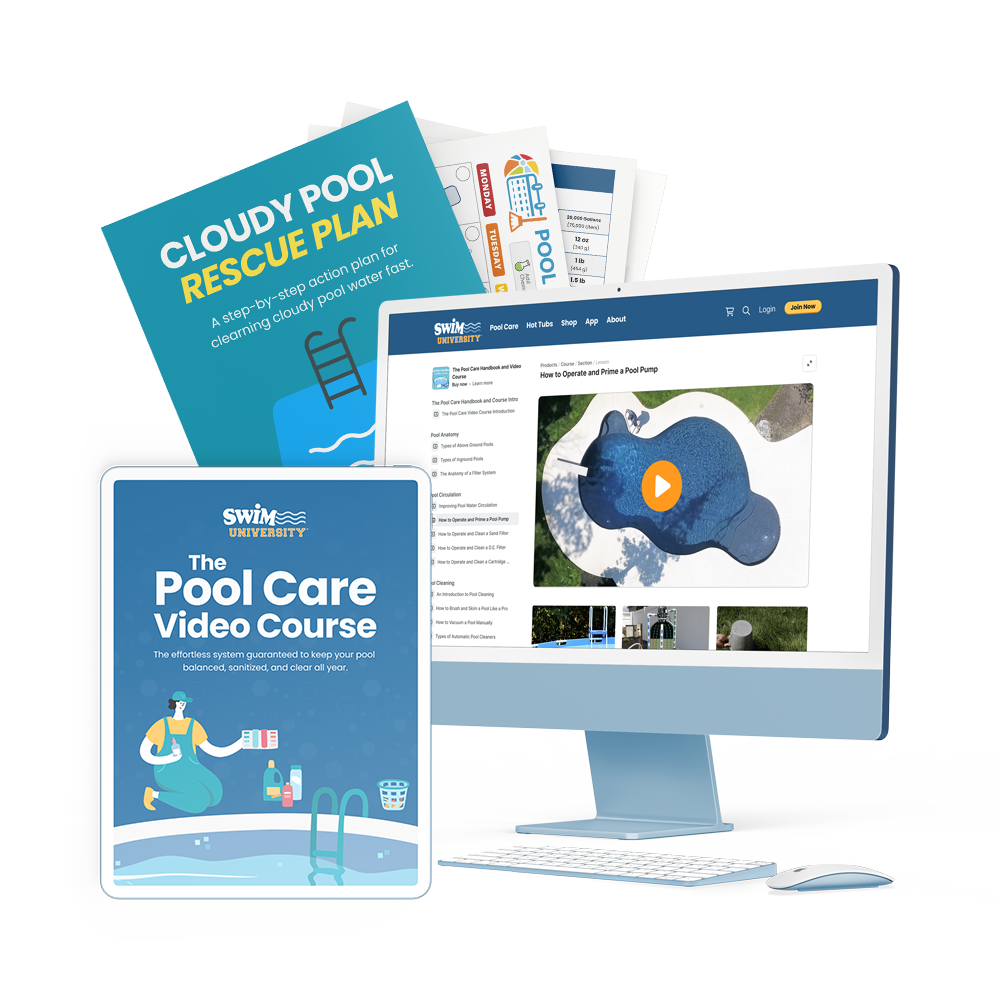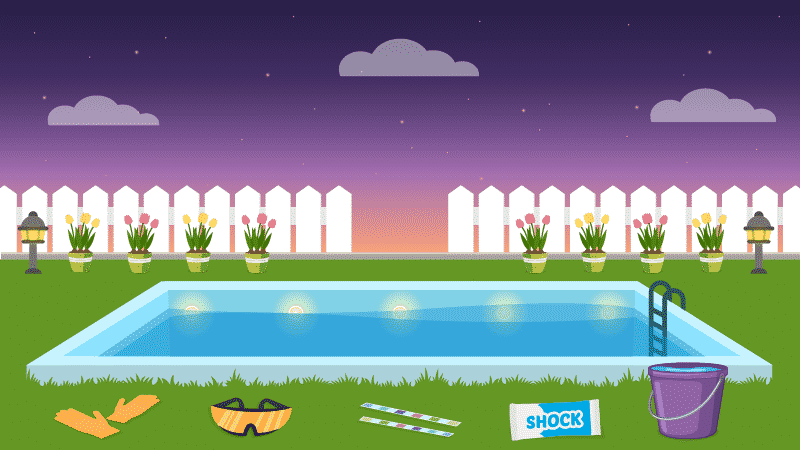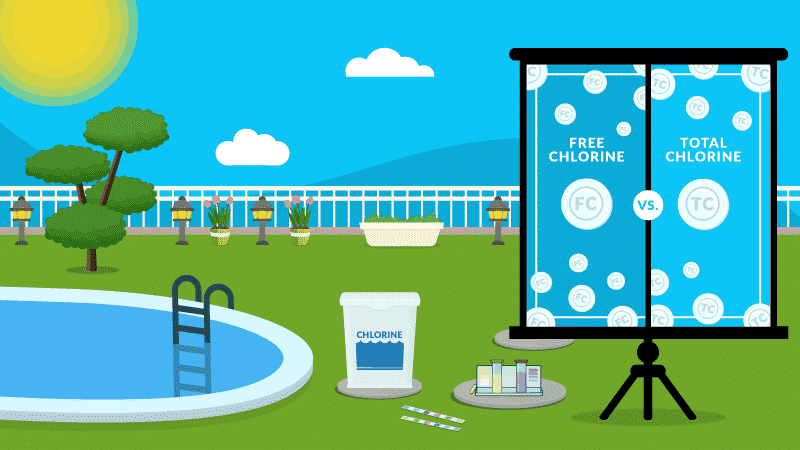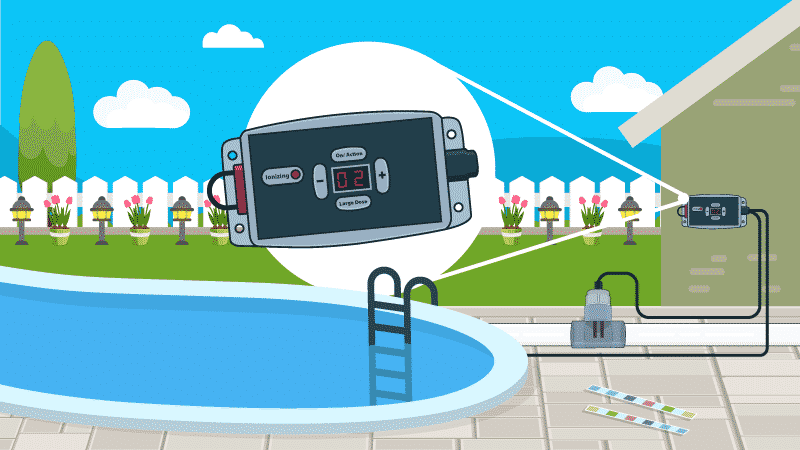How Long to Wait to Swim After Shocking a Pool
Adding shock to your water is an important part of pool maintenance, but it can be hard to know confidently when it’s okay to swim again. Should you wait an entire day after shocking your water? And how do you know the shock is actually dissolved and it’s truly safe for swimmers?
How long to wait to swim after shocking your pool depends on what type of shock you use: chlorine vs. non-chlorine. You can swim shortly after using non-chlorine shock in your water. But as a rule of thumb, you should wait at least 8 hours to swim after adding chlorine shock to your pool water. You’ll know it’s safe to swim if your free chlorine levels have dropped down to the normal range of 5 ppm (parts per million) or less.
So be sure to test your water before and after shocking your pool and make sure your filter is running to circulate the water after you’ve added shock.
Stop wasting time and money with confusing water chemistry and maintenance. Our effortless system guarantees to keep your pool balanced, sanitized, and crystal clear all year. Works for all pools including saltwater.
How Long Does Shock Take to Dissolve?
Most other pool chemicals that adjust levels, like alkalinity, pH, and calcium hardness, dissolve in your pool water in under an hour. But because chlorine-based pool shock is a powerful, highly concentrated dose of chlorine, it takes longer to work in the water.
The goal of adding chlorine shock, like cal-hypo shock or dichlor, is to quickly elevate your chlorine levels. This removes algae, chloramines, and other contaminants by raising your chlorine levels above 10 ppm in a short period of time. And while that high chlorine concentration is great for killing algae and getting rid of chloramines, it’s not safe to swim in. That’s why you need to wait at least 8 hours after adding shock to your water or whenever your chlorine levels drop back to a safe range (ideally 3 ppm, or under 5 ppm). After shocking your pool, always retest your water chemistry by using either a test kit or test strips.
When Should You Shock Your Pool?
Shocking helps by balancing pool water after contamination, like after a pool party or after heavy rain. It also prevents algae growth and is a more effective treatment than algaecide if you already have a significant algae bloom.
Pool shock also helps remove chloramines, or combined chlorine, and helps revitalize your existing chlorine. That means your regular chlorine can continue to do its job of sanitizer your water.
What Type of Shock Should You Use?
If you’re dealing with a significant water problem, we recommend using a chlorine-based shock, like calcium hypochlorite (cal-hypo) or dichlor shock. The powerful concentration of chlorine will help kill contaminants and algae. But because they will significantly increase the amount of chlorine in your water, your pool won’t be safe to swim in until your chlorine levels drop back down.
This fast-acting, quick-dissolving swimming pool shock kills bacteria, controls algae, and destroys organic contaminants in pools.
If you’re looking for a shock for regular maintenance or to refresh your sanitizer, use a non-chlorine shock. Also known as oxidizers, non-chlorine shocks allow you to go back to swimming shortly after it’s added to the water. That’s because it won’t affect your chlorine levels. But while this type of shock will help bring balance back to your water, it’s usually not powerful enough for pool owners dealing with major issues like algae.
A powerful oxidizing agent that eliminates combined non-sanitizing chlorine (chloramines) and provides higher free chlorine levels. Helps eliminate algae growth as well as harmful bacteria. Ideal for use with chlorine or bromine sanitized applications, weekly maintenance, and will not affect other chemical levels
What Should You Do After Shocking Your Pool?
Once you’ve shocked your pool, allow your filter to circulate the water. Keep the pump running for at least 8 hours after shocking. And remember, always add shock at night if you’re using an unstabilized shock, like cal-hypo. Otherwise, the shock will burn off from the sun.
And if you need a step-by-step walkthrough on how to add shock to your pool water, check out our guide on How to Shock a Pool the Right Way.
Frequently Asked Questions About Shocking Pool
Need more help understanding pool shock? Here are some frequently asked questions and answers.
Can you swim in the pool after you shock a pool?
You need to wait for at least 8 hours and up to 24 hours after using a chlorine-based shock before you can swim. And you’ll want to retest your water to make sure your chemical levels are within range. If your free chlorine is at or below 5 ppm and your pH levels are at or below 7.6, it’s likely safe to swim. But always follow the manufacturer’s directions regarding wait times after adding shock.
What happens if you go in a pool that was just shocked?
If you use a pool after adding high contractions of bleach, liquid chlorine, or another type of chlorine-based shock, you may experience skin and eye damage. Chlorine shock and large concentrations of chlorine are highly corrosive. Do not swallow the water. If accidentally swallowed, seek immediate medical attention.
How long should you run a filter after shocking a pool?
Run your pool pump and filter for at least 8 hours after you shock your swimming pool. This provides adequate time for the filter to clean the water and for the pump to circulate the chemicals. If you’re treating algae, plan to run the filter for ideally 24 hours.
Is it okay to shock a pool during the day?
You can shock your pool during the day if you’re using a stabilized chlorine shock that contains cyanuric acid (such as dichlor shock). The cyanuric acid will help protect the chlorine from being destroyed by the sun’s UV rays. However, do not add a shock treatment during the day if you’re using unstabilized chlorine, like calcium hypochlorite (cal-hypo) shock. This type of shock without cyanuric acid will be destroyed by the sun. Check out our guide on the Best Shock for Your Pool for more information.
Why does the pool water turn cloudy after shocking?
It’s normal to experience cloudy water after shocking your pool. This means that the algae and contaminants are dead and suspended in the water. You can use a clarifier or flocculant to clear up your water.
How long do I need to wait to swim after adding other pool chemicals?
You can usually swim within an hour after adding other chemicals to your water. But chlorine shock needs time to circulate and dissipate. For example, if you add calcium chloride to raise your calcium levels, you should wait about an hour for the filter to completely cycle the chemical in your pool. However the dissolving time of other pool chemicals, like muriatic acid or flocculant, depend on how well it was initially mixed into the water. Always retest your water before swimming to make sure your levels are back within the appropriate ranges.
4 Ways We Can Help With Your Pool
- Pool Care Cheat Sheets (Free): Easy-to-use downloadable guides to help you keep track of taking care of your pool this year.
- The Pool Care Handbook: An illustrated guide to DIY pool care, including water chemistry, maintenance, troubleshooting, and more.
- The Pool Care Video Course: You’ll get 30+ step-by-step videos and a downloadable guide with everything you need to know about pool maintenance.
- The Pool Care App: Enter your water test results. Get a custom treatment plan. Know exactly what chemicals to add to keep your pool clear.











